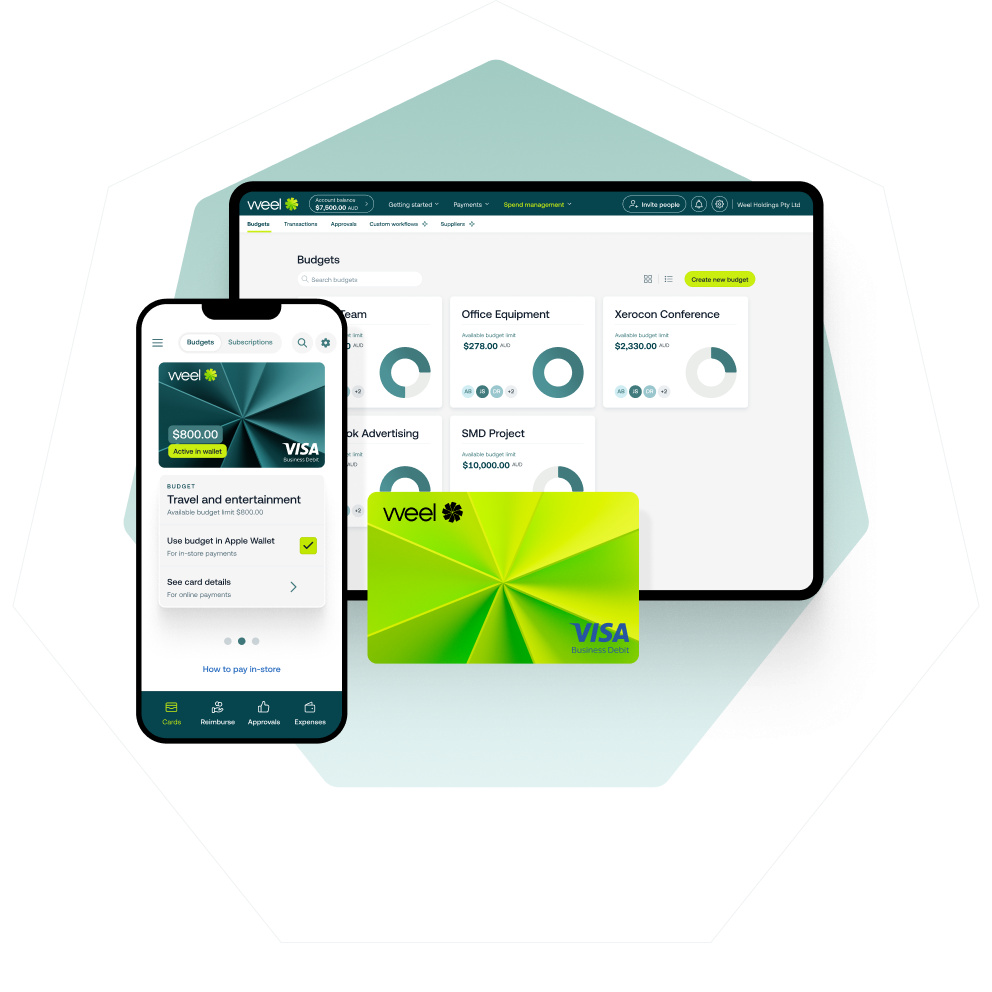According to Grand View Research, the global cross-border payments market topped US $190 trillion in 2024, with over 70% of that volume driven by B2B activity. The number is large, but the shift underneath it is more subtle: what was once infrequent is now routine.
What Weel data shows
We conducted research using aggregated and anonymised business spending data on the Weel platform. This covered FY24–25 card spend across 3,000+ Australian and New Zealand businesses.
One in ten card transactions is now international. More than half of those aren’t tied to freight, flights, or physical goods; they’re software.
.png)
In FY24–25, 34% of all international spend on Weel cards was for recurring subscriptions, including SaaS tools, developer platforms, cloud services, and infrastructure renewals. Advertising platforms and digital services followed closely.
Industries like Technology, Financial Services, and Manufacturing are driving the shift. More domestically focused sectors like Education and NFPs remain behind but are catching up as vendors globalise by default.
These payments aren’t edge cases. They’re part of the operational cost base, and this routine usage introduces routine friction.
Real cost, real choices: The true ROI
At Weel, we ran a like-for-like analysis comparing FX spend on an external rewards-based card we still use for some business expenses versus Weel’s own platform.
In the last 12 months, $94,720 in FX spend on that card incurred a 3% FX markup, costing $2,760 in fees. Add the $1,750 annual card fee, and the total cost rises to $4,510 per year.
That same $94,720 spent through Weel, with a 0.95% FX rate, would cost just $900 in FX fees. Even after including Weel’s Basic Plan, $135 per month for five seats, or roughly $324 per card per year, the total annual cost for Weel comes to $1,224.
In other words, the same spend costs more than three times as much when routed through a traditional rewards card. Even after factoring in rewards value (around $1,388 in this case), the external card still results in a net loss of over $1,800 per year.
And the comparison doesn’t end there. The external card delivers a single product: a card. Weel delivers a platform with automated approvals, budget controls, real-time subscription management, and full spend visibility.
The conclusion isn’t about points; it’s about performance. For the same spend, finance teams using Weel save around $1,800 per year compared to a traditional rewards card, while gaining software that improves control, compliance, and reporting.
Want to see how much you could be saving on your international transactions? Try our FX Calculator.
What finance teams can do today
Finance leaders aren’t waiting for regulation or rate cuts to fix this. They’re redesigning systems to make international payments predictable and transparent.
Reframe FX as a control lever
For most teams, FX has been treated as a cost of doing business, something to absorb rather than manage. That’s changing. Leading finance teams now view FX as an operational control point, not just a market variable.
They’re consolidating global payments through tools that deliver consistent, transparent FX pricing and visibility. Rather than chasing the lowest spot rate, these teams are prioritising predictability and control, making FX exposure measurable, auditable, and forecastable.
Treat subscriptions as infrastructure
Recurring charges now underpin essential operations, from cloud storage to collaboration and developer tools. Yet many finance systems still treat them as discretionary expenses.
Progressive teams are shifting their mindset, managing subscriptions the way they’d manage utilities, as business-critical infrastructure. By tracking spend in real time and tying renewals to budget categories, they’re preventing cost drift and ensuring continuity across functions that rely on these tools.
Automate for scale
The next evolution of finance control isn’t more oversight; it’s smarter automation. As international payments grow in volume and complexity, manual reconciliation and approval chains become unsustainable.
Leading teams are automating the entire workflow: reconciling FX transactions in real time, flagging anomalies before they snowball, and linking approvals directly to budgets and categories. Automation doesn’t remove control; it reinforces it, replacing human error and lag with accuracy and visibility.
The result is a finance system that scales with global operations, not one slowed down by them.
The bottom line
Cross-border spend isn’t rare anymore. It’s the plumbing of modern operations, and like infrastructure, it demands clarity, control, and uptime.
Stay ahead of how business spend is evolving
Weelhouse Insights tracks the real signals shaping how Australian and New Zealand businesses spend, save, and scale, powered by aggregated Weel data and the voices of our finance community.
Follow Weel on LinkedIn for more insights, or subscribe to the Weelhouse Wire for monthly research, benchmarks, and product updates.





.png)








